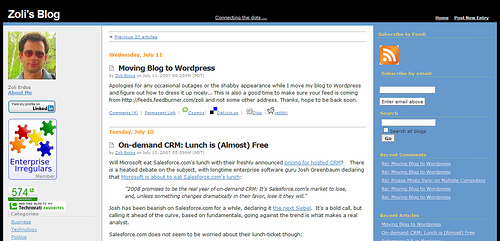 I confess: I also had a captcha on my blog, in my “prior life” on blogware. In fact my defenses were so developed (or primitive?) that Zvents CEO Ethan Stock rightfully called it an obstacle course.
I confess: I also had a captcha on my blog, in my “prior life” on blogware. In fact my defenses were so developed (or primitive?) that Zvents CEO Ethan Stock rightfully called it an obstacle course.
Thankfully I have a better life (OK, just a platform) now, on WordPress, where the combination of Akismet and Spam Karma 2. provides sufficient enough spam protection so I don’t have to torture readers with such obstacle courses anymore. But I guess not all blog platforms are created equal.
Today I tried to leave a comment on Vinnie’s post, which is protected by a captcha. That would be OK (well, sort of) if only I knew it upfront. But what typically happens – and I am not picking on Vinnie, seen this on several other Typepad blogs – is that I review the comment, hit “post”, then move on to another Firefox tab (hey, even I can multitask). Later, when I come back to review the comment/close the tab, I find the captcha screen still waiting for my input. The damn thing was so slow, it did not reveal the captcha screen in when I was here before.
How to improve the captcha? Well, displaying it right on the comment entry page would be a good start… but even better, remove it entirely, replace it with some more intelligent background process (like, if I am a repeat approved commenter on this blog, chances are I am not a spammer … but I am not trying to re-invent Spam Karma logic here).
The absolute irony of the situation: you can read it all right here, on Vinnie’s blog: UI again …don’t pretty up, destroy!
P.S. Vinnie, my friend, I am not picking on you … just your platform.
Update (2/28): A hilarious collection of the 10 worst captchas.
Update (3/5): CAPTCHA is Dead, Long Live CAPTCHA! @ Coding Horror.

 “A new spam blocker called
“A new spam blocker called 




Recent Comments